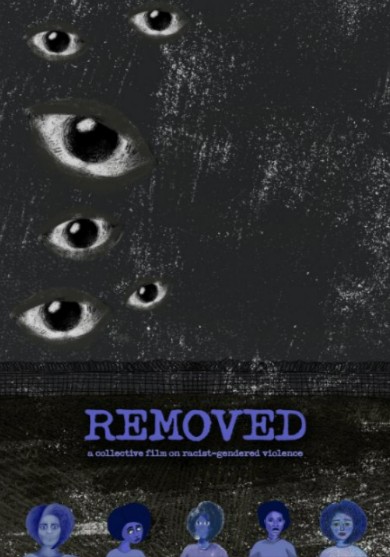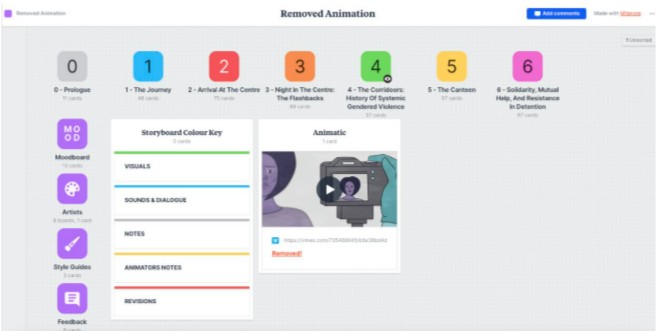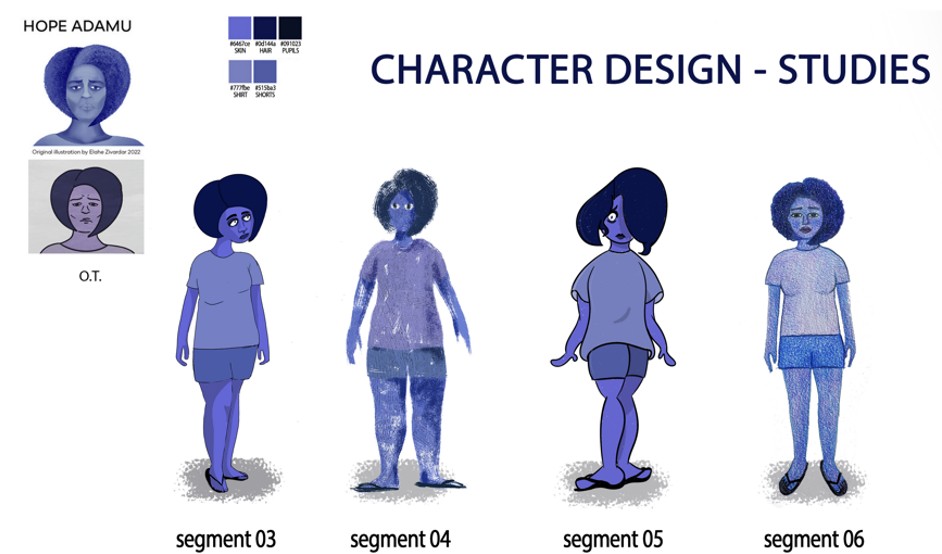Creating counternarratives on immigration detention: from individual academic research to community-engaged participatory processes
Posted:
Time to read:
Post by Francesca Esposito, researcher at the Department of Psychology, University of Bologna and Associate Director at Border Criminologies. This post is part of a mini thematic series about methodological reflections arising from a Detention and Deportation thematic group workshop. Find all the posts in the series here.
Many of us working as activist scholars, committed to documenting, exposing, challenging, and ultimately overcoming immigration detention and border violence, often question the meaning of our work and the actual impact of the evidence we produce. Indeed, as Annika Lindberg recently noted in a brilliant piece titled Researching Border Violence in an Indefensible Europe, while our goal as activist scholars is to expose the harms of border control systems and the suffering they produce across various scales, this effort does not always lead to the desired impact. Documenting border violence—while vital—can sometimes reinforce the very systems we aim to dismantle. Her call to embrace the uneasiness and discomfort of this work resonates with my own experience.
In 2019, when I began my postdoctoral research into the intersectional harms of detention from the perspective of those who travel under the sign women, I had recently arrived in the UK. Thanks to the support of Mary Bosworth, I was able to gain research access to the women’s short-stay unit at Colnbrook and to Yarl’s Wood, at that time the primary facility for detaining women in the UK. However, I was not granted security clearance due to my residency status - at that time Brexit was being implemented – so I joined Mary and Alice Gerlach, as part of their research team, contributing to the administration of the Measure Quality of Life in Detention survey.
During the fieldwork, I was confronted with both the institutional violence of detention and the emotional difficulty of documenting it. My background as a community psychologist and psychotherapist shaped my approach to the encounters with the women I met in these custodial settings — marked by care, but also a deep sense of limitation. In line with a critical action-research approach, I viewed these encounters not only as opportunities to bear witness and gather vital evidence, but also as moments to share information and resources. Still, it often felt insufficient.
That’s why, after leaving the detention sites, I stayed in touch with some of the women I had met — exchanging letters and phone calls, and, in some cases, connecting them to NGOs for support with their cases. Eventually, a few invited me into a WhatsApp group they’d formed to support each other post-release. In late 2019, I invited some of these women to join my research as part of a Community Advisory Board—an approach in participatory research that centres the knowledge of experts-by-experience and aligns with community priorities. Our collaboration deepened over time, forming the basis for a rich community-engaged participatory process that took me/us far beyond the bounds of traditional academic research.
The Covid-19 pandemic—when all external visits to detention centres, including for research, were suspended—opened up space to explore more participatory community-based alternatives to continue my research beyond detention sites. I continued to meet and conduct online interviews with women with lived experience, as well as NGO staff, visitors, and anti-detention activists. These conversations deepened my understanding of the continuum of intersectional violence women face both inside and outside detention sites, and how the state and its corporate allies sustain detention regimes that enable daily abuse.
It was during this period that I met Lou Armitt, then a coordinator at Yarl’s Wood Befrienders (now Beyond Detention). Inspired by our conversations, we began co-creating a short animated film on the racist-gendered violence of detention.
It was the summer of 2021. At the time, neither of us could have imagined how far this process would take us.

We were joined in this endeavour by Elahe Zivardar, aka Ellie Shakiba — an Iranian multidisciplinary artist, activist, and Co-Founder and Creative Director of Shakiba Productions — whose powerful creative work documenting border violence is shaped by her own experience of detention. Aminata Kalokoh, a member of the Community Advisory Board, also joined the project, generously sharing her knowledge and insights drawn from lived experience.
The collaborative scriptwriting process began in the summer of 2021 and continued throughout the project, with each member contributing insights shaped by their diverse relationships to the system: through activism, academic research, lived experience, and visiting. As our discussions unfolded and collaboration expanded to new individuals and groups, the script evolved accordingly, reflecting both the richness and the dynamic, often messy, nature of community-based critical participatory action research.
Emerging from these ecologies of knowledge, the script also became a springboard for further conversations with artists, illustrators, and animators—both with and without lived experience of detention and border controls—on how best to visually represent this collective story. Beyond Oxford Against Immigration Detention and the Border Criminologies team, a key contribution came from the Beyond Detention Friendship Group, a mutual support network of people with lived experience of detention.
The first images began to take shape in autumn 2021 and early 2022, created by Ellie, who initially designed Hope, the story’s main character. Her illustrations laid the foundation for the animation’s first act. This process culminated in spring 2022 with a work-in-progress storyboard composed of initial sketches of the different animation’s parts, completed by Ordinary Toucan.

To support our ongoing consultations with community groups, Ordinary Toucan created an animatic in summer 2022—a rough, moving storyboard with sound, featuring Aminata’s narration—to help visualize the story, pacing, and scene transitions ahead of full animation production. Designed to engage young people critically with these issues, the animatic was presented that summer to sixth form students at a school in Bedford. These community engagements prompted further revisions to both the script and the storyboard.

Participatory processes are inherently messy, and unexpected challenges often arise. Our project was no exception. In 2022, the departure of the original artist with lived experience marked a significant turning point, prompting the decision to involve multiple illustrators—women and gender non-conforming artists—each contributing to different sections of the animation. Their diverse artistic styles reflected the fragmented, dehumanising nature of detention and the multiplicity of voices woven into the story.
Funding was another major hurdle. At the project’s outset, we underestimated the time and resources required, which led to financial strain and multiple grant applications. Despite administrative burdens and moments of exhaustion, our shared commitment to abolition and solidarity sustained the effort. Over time, more groups joined and strengthened the project. For example, in late 2023, AVID (Association of Visitors to Immigration Detainees) came on board as co-director alongside the newly formed Unchained Collective.
In winter 2023, we began collaborating with a new animation group, Moonchausen, who helped us identify the remaining illustrators and successfully complete the animation. Over the following year and a half, we held ongoing online meetings with everyone involved at various levels. This long, and often complex, process ensured the animation remained firmly rooted in a grassroots, participatory approach, enhancing its potential for transformative impact. At the same time, balancing this collective ethos with funding deadlines, and accommodating the availability, schedules, and diverse creative practices of the artists involved, posed ongoing challenges.
Finally, in July 2024—three years after we began this journey—the animation was completed. We called it Removed.

In March 2025, Removed premiered at an event hosted by Westminster University, which was attended by many community members, visitors, activists, and people with lived experience. Following the screening, we held a “long table” discussion focused on strategies for collectively reclaiming the narrative on immigration detention. It was clear to me that what had begun as a small, individual research project had grown into something much broader—and certainly more important—a collectively owned tool that had taken on a life of its own.
Community participatory processes, especially those built from the bottom up, are inherently messy, but their power lies precisely within this meaningful chaos. These journeys, shaped by collective discussion, uncertainty, unexpected turns, and improvisation, produce rich insights and unforeseen ripple effects. This project was no exception. As I write, we are developing a toolkit to accompany the animation, designed to support its use as a critical educational resource for activists and community groups.
Removed is a testament to what becomes possible when research, art, and community-led activism come together in solidarity. While it honours acts of resistance and survival, it also demands that we confront the ongoing realities of detention and the broader systems that sustain it. In this sense, it is ultimately a call for action. Responding to Lindberg’s call to mobilise our research to confront the affective attachments that sustain border violence, this journey has taught me that when research dares to transcend traditional boundaries, and is grounded in community solidarity, it can move beyond documentation and critique—towards generating new narratives and collective imaginaries that can open up space for change.
Any comments about this post? Get in touch with us! Send us an email, or find us on LinkedIn and BlueSky.
How to cite this blog post (Harvard style):
F. Esposito. (2025) Creating counternarratives on immigration detention: from individual academic research to community-engaged participatory processes. Available at:https://blogs.law.ox.ac.uk/border-criminologies-blog/blog-post/2025/05/creating-counternarratives-immigration-detention. Accessed on: 08/12/2025Share:








